Optimization is at the core of everything we do as marketers. Whether it's adjusting a subject line for an email or pivoting your blogging strategy to focus your efforts on a new audience, optimizing and making iterations over time is key to long-term success and growth. In today’s fast paced and competitive marketplace, there’s no such thing as a successful long-term “set it and forget it” marketing strategy. By tracking everything you can, analyzing the success of your efforts, and by making changes to improve your strategy over time, you will be able to stay ahead of your competition and build on the successes you find.
Related Blog: Brand Affinity Marketing: How to Use Episodic Video Series
For many tactics in the digital marketing space, optimizing is simple; Change the text, swap out a button, update the image, etc.. But what about video marketing optimization? How can you make simple iterations to content that is complex to create in the first place?
Where Do I Start with Video Optimization?
If I was writing this section a year ago I’d probably say, “In order to optimize your videos, you need to first create videos…” and then go on for a few sections about how to start with video. BUT.. It's almost 2019, and you probably don’t need me to tell you how important video content is, just like you don’t need me to tell you how important blogging is, right?
In order to optimize your video, first, start by determining what the goal of your video content is. Are you looking to build awareness? Generate leads? Or are you looking to move someone from one step in your sales process to the next? By understanding what the goal of the content is, you can then determine what metrics are important to measure. Once you understand the metrics you’re tracking, it becomes easier to make decisions about the changes that will help your content accomplish the goals you’ve set.
Without talking about analytics and detailed tactics, let’s take a step back and think about what determines the success of video. What are you hoping to happen when you put a video on a website page or blog?
Goal 1: Get people to play the video
Goal 2: Make sure that once they do play it, they enjoy it enough to see it through
Goal 3: Move viewers through to an action that you want them to take
What’s nice about these goals? They are transactional, which means you can measure them! Obviously, these goals are a major simplification of what’s important when it comes to video, but in the most basic way, you really just want people to play, watch, and feel moved by your video content.
So How Do You Measure For These Goals?
There are a variety of video metrics that you could measure that depends on the goals you have set. For the three fundamental goals I mentioned above, the metrics you want to measure for are play rate, average engagement, and conversion rates. I would argue that these three video metrics are the most important metrics to pay attention to and optimize for. Measuring play rate, engagement, and conversion rate gives you insight into:
- How effective your video content is from the initial pitch to the viewer
- Viewers attention span throughout the video
- Your ability to move them through to the next step in your sales or marketing funnel
Now that you're measuring your video efforts in a way that directly influences your goals, you can begin testing tactics to improve upon the successes and failures that you encounter. There’s no one size fits all video strategy, so try proven tactics that have worked for others and measure them against what works best for your ideal audience.
Tactics to Help Optimize your Overall Video Efforts
There are many proven methods that can help optimize specific metrics, but which methods should you be applying to all of your video efforts? Don’t worry, I made a list!
Coffee Talks: Tips for Video Marketers
Watch more episodes of our Inbound Marketing video series, Coffee Talks!
Match Content with Visitor Intent
It wouldn’t make much sense to put a video about Facebook Ads on a blog post that only talks about cleaning up your database. Besides the impact that this has on your site's user experience, it's not optimizing for the success that your amazing content could have.
If someone comes from Google or another source to a database cleanup blog post, you can make some assumptions about why they are there and what they are hoping to learn. By being strategic and intentional with your content placement, you’ll begin seeing an overall lift in your video metrics.
Going back to the goals mentioned earlier, think about the impact of having content that is misaligned with the visitors intent. Your play rate will suffer since the video is not intended for that audience. Your average engagement will be low since the content in the video adds no value to the user’s journey. And lastly, your conversions will be marginal because the actions you want the viewer to take from this video is not relevant to them.
For example, this video makes sense with the topic that we are discussing:
Segment Your Video Content
As content creators, we sometimes try to create content that attracts a wide range of people. If your goal is to build brand awareness, then great! But not every video you create as a marketer is meant to be valuable to everyone.
Your video metrics can tell you a couple of really important things about your content: One, is your content valuable and engaging? And two, are you promoting these videos to the right people and through the right channels?
Segmenting allows you to be more specific and personal with your content messaging. Let's say you are creating a video to only attract employees that work at Apple. What are some things you might say in your content? Maybe you address them in the video as being Apple employees or title the video as something that is only relevant to that audience, and then encourage them to take action with whatever next step you were wanting them to take. When you segment your audience effectively, your messaging can be more specific and relevant to the audience it is intended for.
On-Going Iterations
Just like everything else in the digital marketing space, we learn from our creative output. If a blog is receiving a ton of traffic, but low CTA conversions, we consider switching or modifying the CTA. Video content should be treated exactly the same. This can seem like a difficult task since video requires a level of skill and time that makes it difficult to make swift changes, but it doesn’t have to be.
Start by making simple changes; trim down the intro by 5 seconds, move the placement of the CTA from the end of the video to the middle, change the title of the video, etc… Pay attention to what the data is telling you and make small changes that could have a large impact on your video goals.
Proven Tactics to Improve Specific Video Metrics
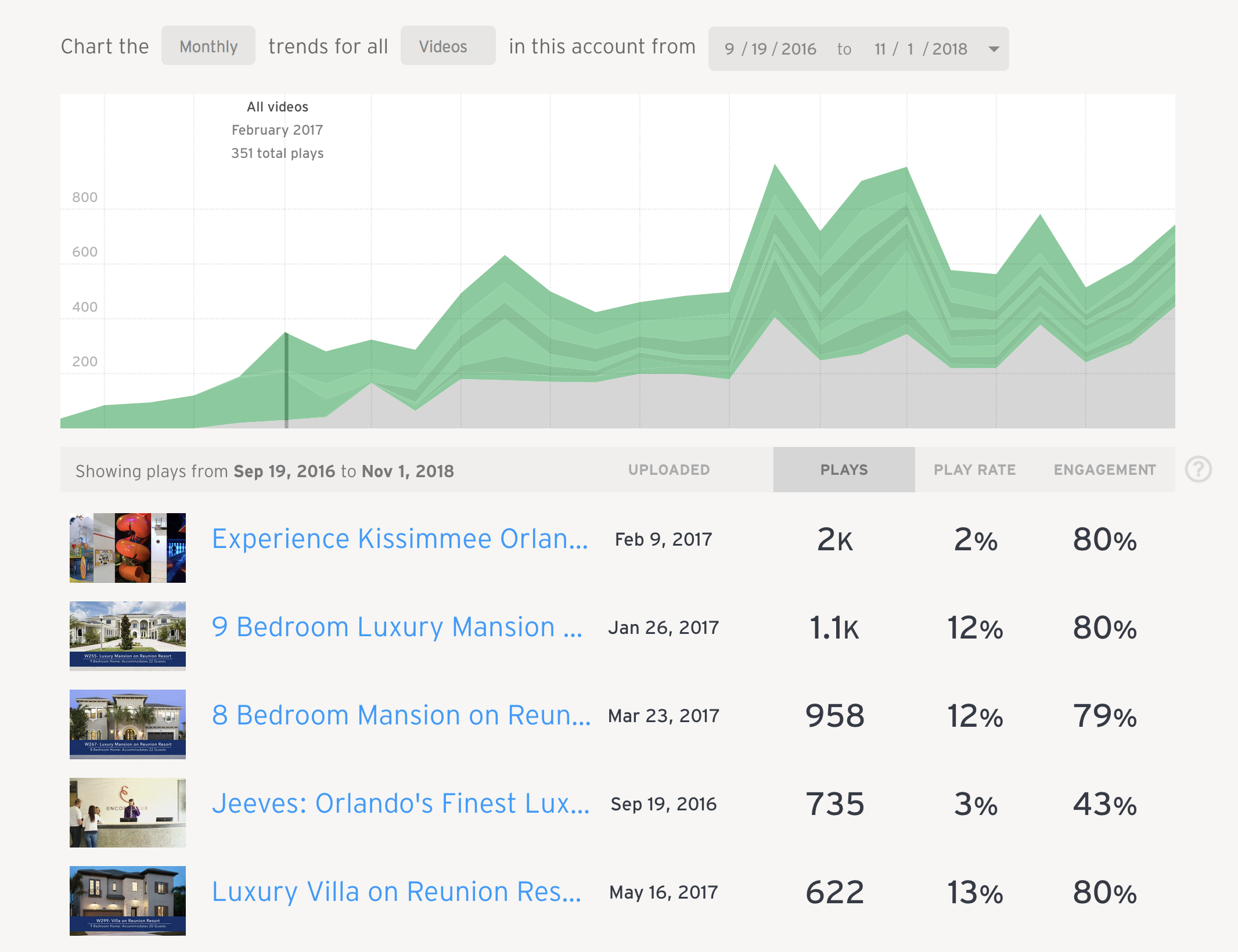
Increasing Video Play Rate
What does play rate tell you about your video content? If play rate is low, It could be because there are some foundational issues (misaligned intent, not segmented properly, no added value, etc.), or smaller, more visual and contextual issues that are affecting this metric. Ultimately, the question that play rate answers is “Do people see the value enough to even hit play?”
Improving Your Video's Play Rate
Here are 5 ways to increase the play rate on your videos:
- Add branding and custom colors to the player
- Optimize page placement
- Optimize the player size
- Optimize the thumbnail
- Add chapters
1. Add Custom Branding and Colors to Your Player
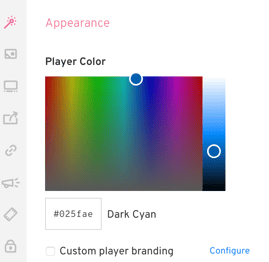 Increasing play rate is all about finding ways to present your video content to the right audience with a visual and contextual appeal, enough to get them to hit the play button. Some video platforms allow you to customize certain elements of the player, with things like colors and branding.
Increasing play rate is all about finding ways to present your video content to the right audience with a visual and contextual appeal, enough to get them to hit the play button. Some video platforms allow you to customize certain elements of the player, with things like colors and branding.
In some cases, videos with a custom player color saw an 18% increase in play rate.
2. Consider the Video’s Page Placement
Another important factor that influences the play rate is where the video is positioned on the page. You can use site heat map software like LuckyOrange to see how users on your site are engaging with your website and put the video in places where people are engaging most.
Lets say you created a pillar page with a lot of written content on it and at the very end you embed a video on the page. Out of the number of people that visited that page, how many of them do you think made it to the end to watch your video? Consider putting your video towards the top of the page to get more eyes on it which will lead to more people hitting that play button—and therefore increasing your video's play rate.
The further down your video is positioned on your page, the more your play rate suffers.
3. Optimize the Player Size for Play Rate
Believe it or not, but the size of your video player does have an effect on your video play rate. If your someone that loves having your videos fill up the entire screen, then you should reconsider. Wistia did research to find what the “sweet spot” dimensions were for video player size, in relation to play rate and found that between 401-600 px width and 301-450px height garnered the best results.
4. Change the Thumbnail
This is probably the simplest edit to make that could help increase your video’s play rate. Your thumbnail is the first thing a user sees when they come across your video content and making a good first impression can encourage users to push play.
Some proven ways that businesses have optimized their thumbnails are by adding people, text, or by creating motion thumbnails. Look at what other successful videos are doing—yours or someone else's—and take inspiration from them. Ultimately, it's a case of trying new things and seeing what sticks.
5. Add Chapters to Your Longer Video Content
Longer content can affect your video metrics in a lot of ways. If people see that your video is 20 minutes long, they may think, “I don’t have time for this”, and never engage with your content. If you add chapters, it allows the user to review the different sections of your video and only play the sections of your content that are relevant to the content they are most interested in.
Long videos can be intimidating. Break them up with chapters and let people go straight to the relevant information that they seek.
Increasing Average Video Engagement
Video engagement tells you a lot about the quality of your content. If everyone who hits play on your video watches it all the way through to the end, the content must be valuable.
It is very difficult to get, and hold onto, the attention of anyone on the internet. It’s the war that digital marketers have subscribed to and optimizing your content to try and hold that attention is key to the success of your efforts. What are ways to optimize your videos to improve average engagement?
How to Improve Your Video's Average Engagement
Here are 3 ways to improve average video engagement:
- Make data-driven edits to your content
- Shorten the length of your content
- Personalize the video content
1. Make Iterations Based on Results
You can brainstorm and come up with a thousand creative ideas for how to grab the attention of users on your website, but until you execute and track the outcome, you’ll always be taking a shot in the dark with your content. If the video software that you use to host your videos allows you to track how people are engaging with your content, review the heatmaps and make adjustments as you see best fits. A simple edit that has helped increase the average engagement on our client videos is shortening or removing the title sequence. It’s common to see companies with videos that linger on their brand logo for 3 seconds too long and lose a large percentage of their audiences attention right from the start. Get to the value fast and try to pull your audience in right away with your message. Learn from the heatmap and analyze sections where people rewatched your content to make decisions for future videos, as well as editing current ones.
2. Trim the Length of Your Video
As I mentioned above, it's really hard to keep anyone’s attention on the internet. Don’t let your content go on for too long. Your users will appreciate how concise you are and come back wanting more.
This rule applies to anything you're putting together like an email campaign, a blog, or if you're shooting a video; it’s important to keep it valuable, engaging, and concise. Say what you need to say and get out of there, don’t let your audience suffer from running on with information that doesn’t matter to them.
This might mean cutting intros or even a clip you absolutely love; Sometimes it may involve “killing your darlings.”
3. Personalize as Much as You Can
If you create a personalized video meant for a specific person, chances are they will play it and watch it all the way through.
The perceived value that is attached to creating personalized videos is huge.
People see video as this hard-to-do task, so taking the time out of your day to create a personal video for them excites them and makes them feel obligated to at least watch it, and watch it all the way through.
Of course, you can’t create a personal video for every single lead, but find ways to segment your intended audience to make the video as relevant and personal to your users as you can.
4. Improve Your User Experience
One way to keep people engaged is to make it as easy as possible for them to continue watching. Here are a few easy things you can do to help improve your video's user experience:
Add Captions: Not only is it good for SEO, but captions provide the help some people may need to digest your content.
Add a Video Gallery: A gallery can contain all the videos on a subject making it easier to continue watching videos and keep somebody entertained and engaged.
Add Video Chapters: Adding in chapters to your videos can help your engagement because it lets people easily maneuver your longer content to find exactly what they need and removes any intimidation that comes from seeing a long video load up.
Include Graphics and Branding: Spice up your videos with helpful, colorful, and engaging graphics that add to the value of the video and provide valuable information. You don't want to go full slideshow, but adding in motion graphics or text on your video can give additional value to your audience.
Increase Conversion Rates on Your Videos
Conversion rates can be analyzed in different ways. If there is a form or a CTA on your videos, you can measure the conversion of those who clicked the CTA or filled out the form. You can also measure conversion rate by analyzing the overall views to leads generated from the video. If you want to think outside the box, you can also analyze the indirect conversion rate influenced by video content. How does video influence the path of a visitor becoming a lead who then becomes a customer?
How to Improve Your Video's Conversion Rate
Here are 3 ways to improve conversion rate on your videos:
- Add relevant CTAs in high engagement places
- Use a form that integrates with your video player
- Connect your lead generation platform with your video platform
1. Place CTA’s Throughout Your Video, Not Just at the End of Your Video
When you use software like Wistia, you can track how users are engaging with your video content. You can see where people are most engaged, where they are stopping, and where they are rewatching. This information helps us determine where we should add conversion opportunities.
Maybe we see a spike in engagement halfway through the video and decide we want an annotation to allow users to convert right there vs at the end of the video. We can make these iterations and test until we find a solution that works.
2. Put a Form Right in Your Videos
Don’t go and add forms to every video you create but if the video is relevant and the next step is to capture the user's information, go ahead and add a form right into the video player.
See if that helps increase lead generation and adjust accordingly. You can even choose where the form enters in to the user experience. Do you make users give up their information to watch the video or wait until the end to ask them for their information? Wistia allows you to embed a form along the side and does not stop people from watching the video. It’s all dependent on the context of the video and value offered, but test different options and choose what works best for your specific use case.
3. Integrate Your Video Platform with Your Lead Generation Platform
It’s no secret that as an agency we are HubSpot and Wistia partners for plenty of reasons. One obvious benefit: they integrate with one another! Having these two softwares integrated with one another gives us insight into how our leads are influenced by our video content in their buying process.
We may learn about a video that is heavily influential in converting leads into customers and decide that we want to put that video on a bottom of the funnel landing page or promote it through an email campaign. Knowing the indirect influence that video has on the sales process, helps us make decisions with video that increases conversion on other areas of our marketing efforts (landing pages, emails, subscriptions, etc…) and those of our clients.
Video metrics as seen on a Databox databoard
Video A/B Testing with Wistia
How do you know if your optimizations actually work? Test, test, and… TEST! It’s hard to suggest a specific tactic because not everything works the same way. The tactics above are generally successful, but until you get creative and try some of the different tactic variations for your own marketing, you’ll have no idea what works best for your ideal audience.

Wistia recently created an a/b testing feature built right into their video software. All you have to do is go to the A/B testing tab within their software, choose the two videos you want to test, (For example, one video with a CTA at the end, and the other video with the CTA in the middle) and it generates an embed link that automatically switches the content from user to user.
When’s the last time anyone mentioned video and A/B testing and described it as ‘simple’? This new feature really is a game changer and will help businesses grow their video marketing and sales efforts without the time investment that is normally associated with it.
You shouldn’t feel intimidated by the idea of video optimization. While making iterations to the creative elements of your content can seem like a daunting task, you can still make simple changes to the content that requires no editing skills. Test one variation at a time, making small improvements to your content. Then, watch as your play rates, average engagement, and conversions grow.
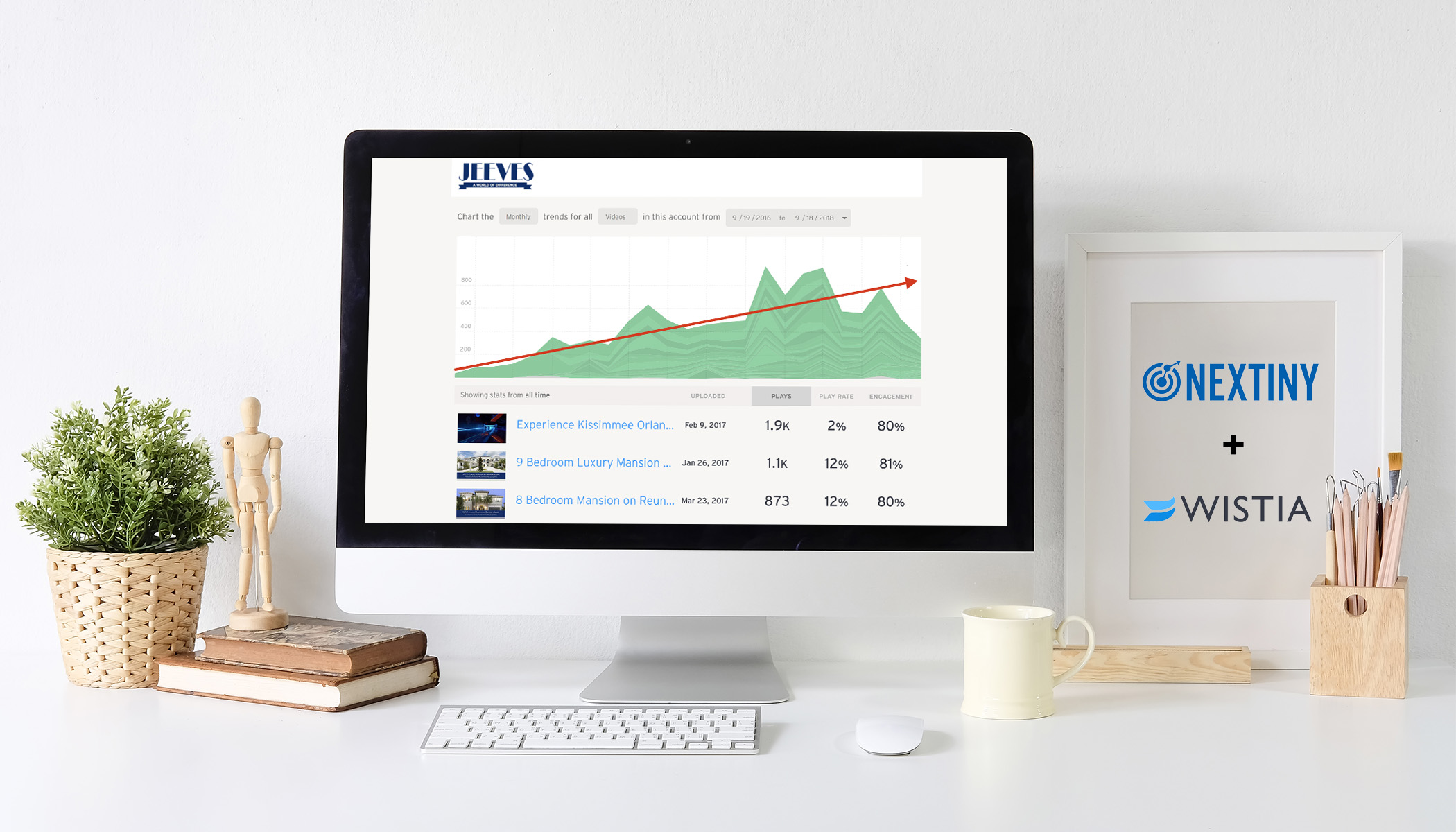
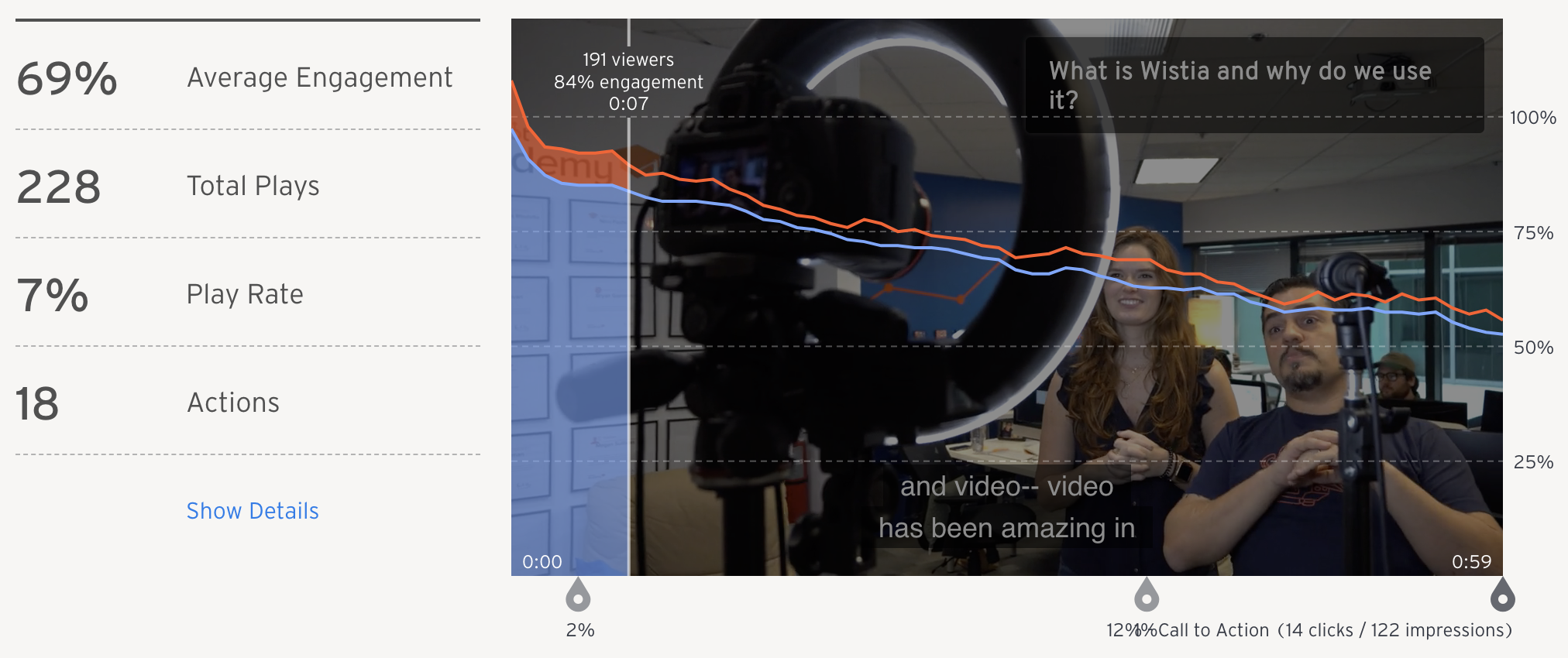

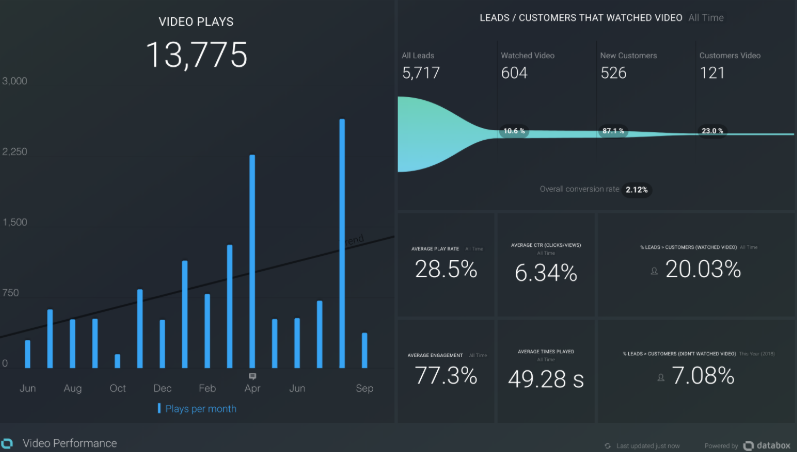


-1-1.png)

